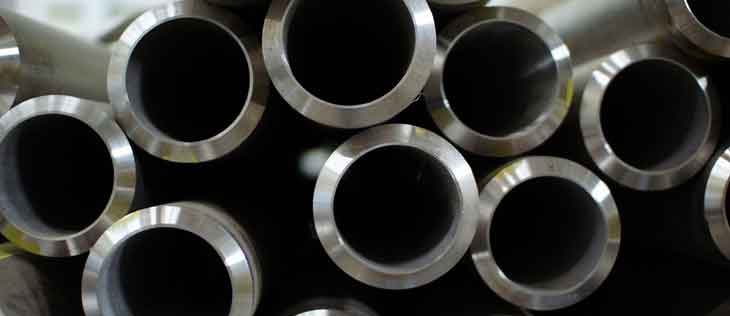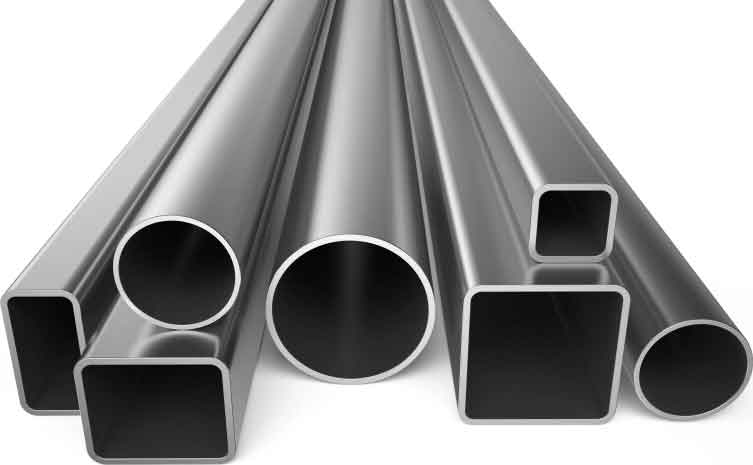

What is the difference between Pipe and Tube?
People use the words pipe and tube interchangeably, and they think that both are the same. However, there are significant differences between pipe and tube.
The short answer is.. A PIPE is a round tubular to distribute fluids and gases, designated by a nominal pipe size (NPS or DN) that represents a rough indication of the pipe conveyance capacity; a TUBE is a round, rectangular, squared or oval hollow section measured by outside diameter (OD) and wall thickness (WT), expressed in inches or millimeters.
Is It a Pipe or a Tube?
In some instances the terms may be used interchangeably, however there is one key difference between tube and pipe, particularly in how the material is ordered and toleranced. Tubing is used in structural applications so the outside diameter becomes the important dimension. Tubes are often put into applications such as medical devices that require precise outside diameters. The outside diameter is important since it will indicate how much it can hold as a stability factor. Whereas pipes are normally used to transport gasses or liquids making it important to know the capacity. Knowing how much can flow through the pipe is key. The circular shape of the pipe make it efficient when handling pressure from the liquid flowing through.
What is Pipe..
Pipe is a hollow section with round cross section for the conveyance of products. The products include fluids, gas, pellets, powders and more.
Pipe is typically ordered using the Nominal Pipe Size (NPS) standard and by specifying a nominal diameter (pipe size) and schedule number (wall thickness). Both tubes and pipes can be cut, bent, flared and fabricated – check out our top 10 tips for ordering tubing and piping.
The most important dimensions for a pipe is the outer diameter (OD) together with the wall thickness (WT). OD minus 2 times WT (schedule) determine the inside diameter (ID) of a pipe, which determines the liquid capacity of the pipe.
Pipes are categorized as tubular vessels used in pipeline and piping systems, and commonly transport gases and fluids. They are specified by “Nominal Pipe Size” (NPS) and Schedule (wall thickness). NPS is a size standard established by the American National Standards Institute (ANSI), and should NOT be confused with the various thread standards such as NPT and NPSC.
The manufacturing of Nominal Pipe Sizes from 1/8” to 12” is based on a standardized nominal outside diameter (OD) that is different from the measured OD. NPS pipe 14” and up have measured OD’s that correspond to the nominal size.
The reason many people, including plumbers, engineers, and others, mistakenly believe NPS refers to the ID on smaller pipes is because of how the standard was originally defined. The standardized OD was originally defined so that a pipe with a standardized OD and wall thickness typical of the period when it was established, would have a pipe ID that was approximately equal to the nominal size of the pipe. For example, 3” Schedule 40 NPS has an outside diameter and wall thickness that very roughly gives it an inside diameter of 3”. Regardless of the wall thickness the nominal OD of a pipe will not change.
Examples of actual O.D. and I.D.
Actual outside diameters
- NPS 1 actual O.D. = 1.5/16" (33.4 mm)
- NPS 2 actual O.D. = 2.3/8" (60.3 mm)
- NPS 3 actual O.D. = 3.1/2" (88.9 mm)
- NPS 4 actual O.D. = 4.1/2" (114.3 mm)
- NPS 12 actual O.D. = 12.3/4" (323.9 mm)
- NPS 14 actual O.D. = 14" (355.6 mm)
Actual inside diameters of a 1 inch pipe.
- NPS 1-SCH 40 = O.D.33,4 mm - WT. 3,38 mm - I.D. 26,64 mm
- NPS 1-SCH 80 = O.D.33,4 mm - WT. 4,55 mm - I.D. 24,30 mm
- NPS 1-SCH 160 = O.D.33,4 mm - WT. 6,35 mm - I.D. 20,70 mm
Such as above defined, the inside diameter is determined by the oudside diameter (OD) and wall thickness (WT).
The most important mechanical parameters for pipes are the pressure rating, the yield strength, and the ductility.
The standard combinations of pipe Nominal Pipe Size and Wall Thickness (schedule) are covered by the ASME B36.10 and ASME B36.19 specifications (respectively, carbon and alloy pipes, and stainless steel pipes).

What is Tube..
The name TUBE refers to round, square, rectangular and oval hollow sections that are used for pressure equipment, for mechanical applications, and for instrumentation systems.
Tubing is typically ordered to outside diameter and wall thickness; however, it may also be ordered as OD & ID or ID and Wall Thickness. Although tubing has three dimensions (O.D., I.D. and wall thickness) only two may be specified with tolerances and the third is theoretical. Tubing is usually ordered and held to tighter and more stringent tolerances and specifications than pipe.
Tubes are indicated with outer diameter and wall thickness, in inches or in millimeters.
Tubing is generally used for structural purposes and the OD is an important and exact number. Tubing size is specified by OD and WT (wall thickness). The stated OD and measured OD are generally within very close tolerances of each other. Tubing is usually more expensive than pipe due to tighter manufacturing tolerances.
Interestingly, while the stated and measured OD’s of tubing are almost exact in most cases, copper tubing generally has a measured OD that is 1/8” larger than stated OD. As such, maybe it should be called copper pipe. However, stainless steel, aluminum, and steel tubing all have measured and stated OD’s that are exact or within a specified tolerance, usually in the thousandths of an inch (e.g. +/- 0.04").

Classification
The classification of pipes are schedule and nominal diameter. Pipe is typically ordered using the Nominal Pipe Size (NPS) standard and by specifying a nominal diameter (pipe size) and schedule number (wall thickness). The schedule number can be the same on different size pipe but the actual wall thickness will be different.
Tubes are typically ordered to outside diameter and wall thickness; however, it may also be ordered as OD & ID or ID and Wall Thickness. The strength of a tube depends on the wall thickness. The thickness of a tube is defined by a gauge number. Smaller gauge numbers indicate larger outside diameters. The inside diameter (ID) is theoretical. Tubes can come in different shapes such as square, rectangular and cylindrical, whereas piping is always round. The circular shape of the pipe makes the pressure force evenly distributed. Pipes accommodate larger applications with sizes that range from a ½ inch to several feet. Tubing is generally used in applications where smaller diameters are required.
Characteristics
There are a few key characteristics that separate tube from pipe:
Shape
Pipe is always round. Tubes can be square, rectangular, and round.
Measurement
Tube is typically ordered outside diameter and wall thickness. Tubing is usually held to tighter and more stringent tolerances and specifications than pipe. Pipe is typically ordered using nominal pipe size (NPS) standard and by specifying the nominal diameter (pipe size) and schedule number (wall thickness)
Telescoping Abilities
Tubes can be telescoped. Telescoping tubes are perfect for applications different pieces of material to sleeve or expand inside one another.
Rigidity
Pipe is rigid and cannot be shaped without special equipment. With the exception of copper and brass, tubes can be shaped with some effort. Bending and coiling tubing can be done without excessive distortion, wrinkling or fracturing.
Applications
Tubes are used in applications such as medical devices that require a precise outside diameter. The outside diameter is important since it will indicate how much it can hold as a stability factor. Pipes are used for transporting gasses or liquids making it important to know the capacity. The circular shape of the pipe makes it efficient when handling pressure from the liquid flowing through.
Metal Types
Tubes are cold rolled and hot rolled. Pipe is only hot rolled. Both can be galvanized.
Size
Pipes accommodate larger applications. Tubing is generally used where small diameters are required.
Strength
Tubes are stronger than pipe. Tubes perform better in applications that require durability and strength.




